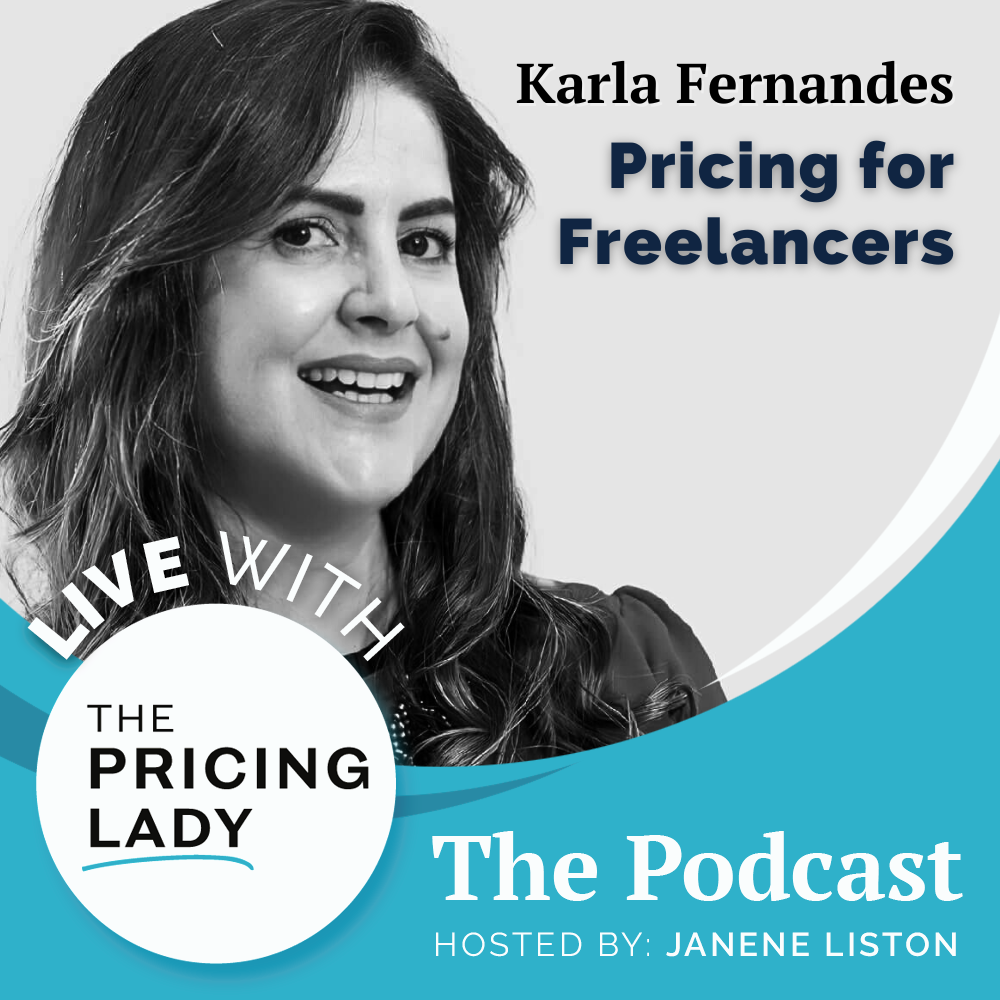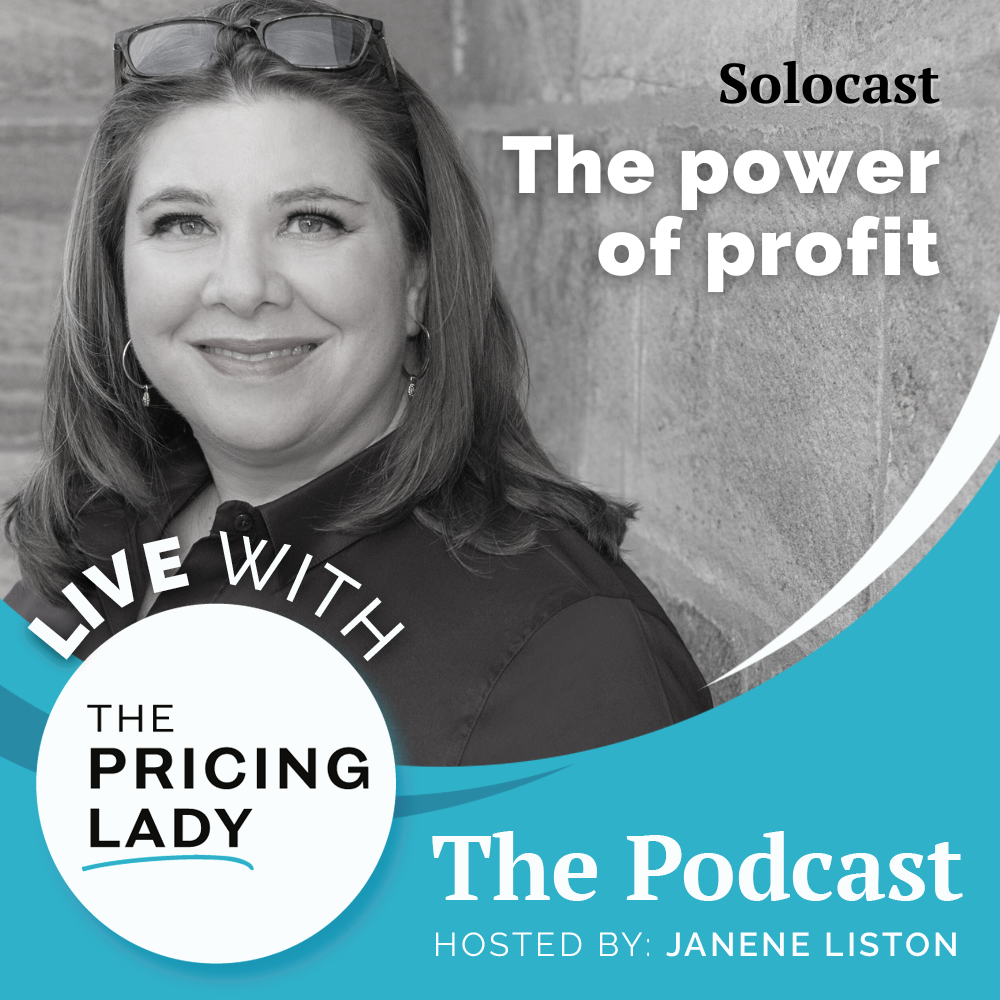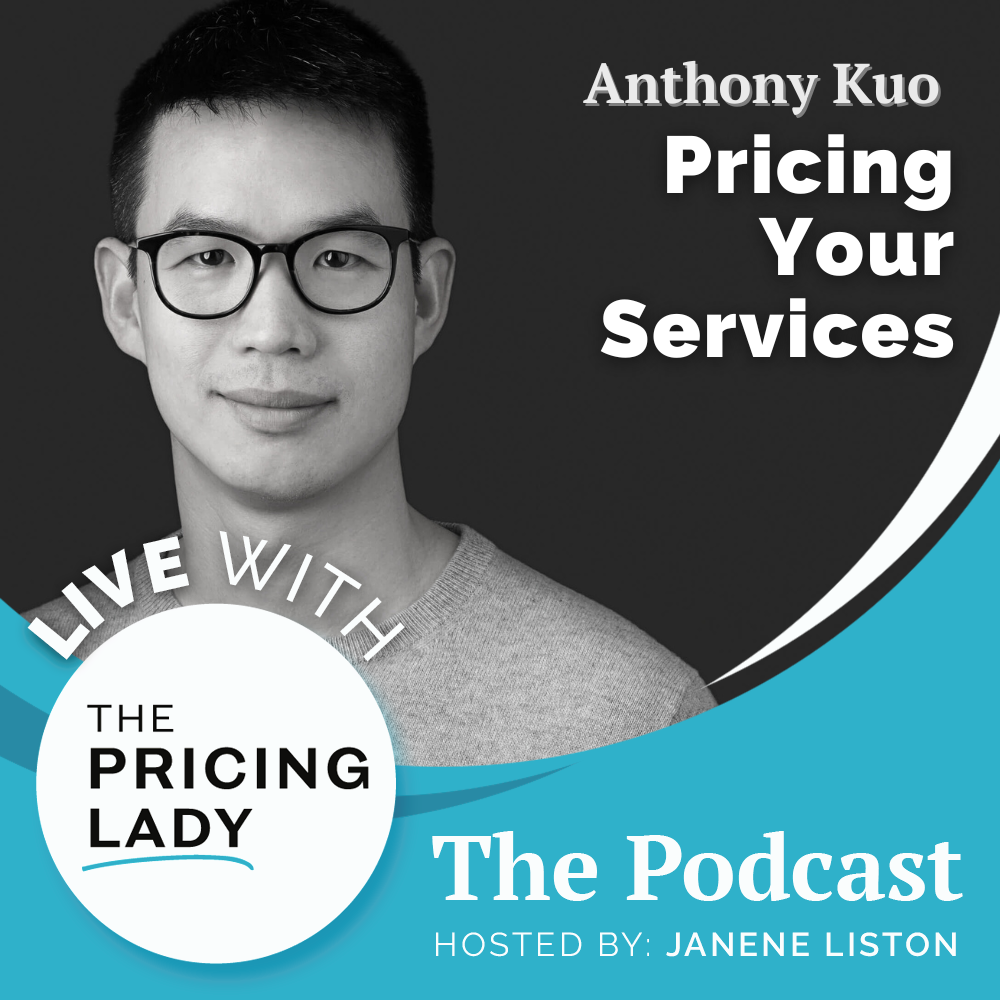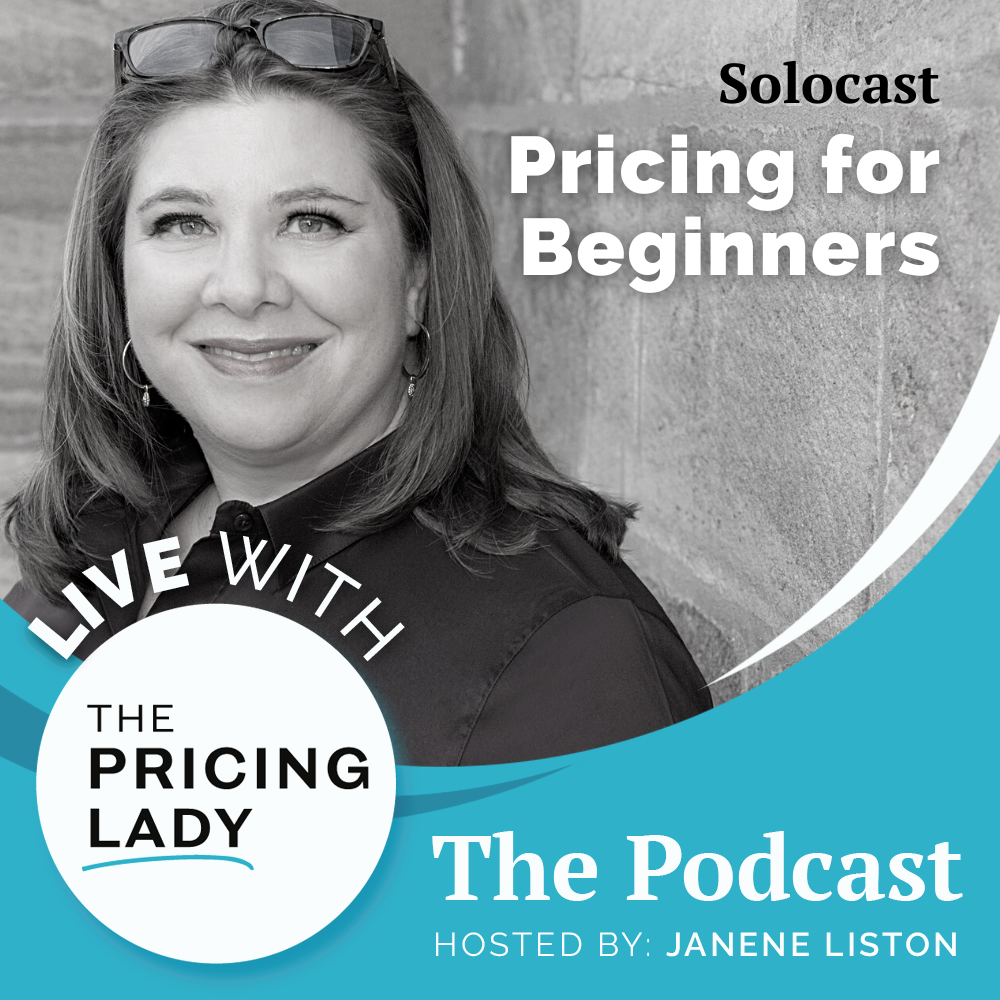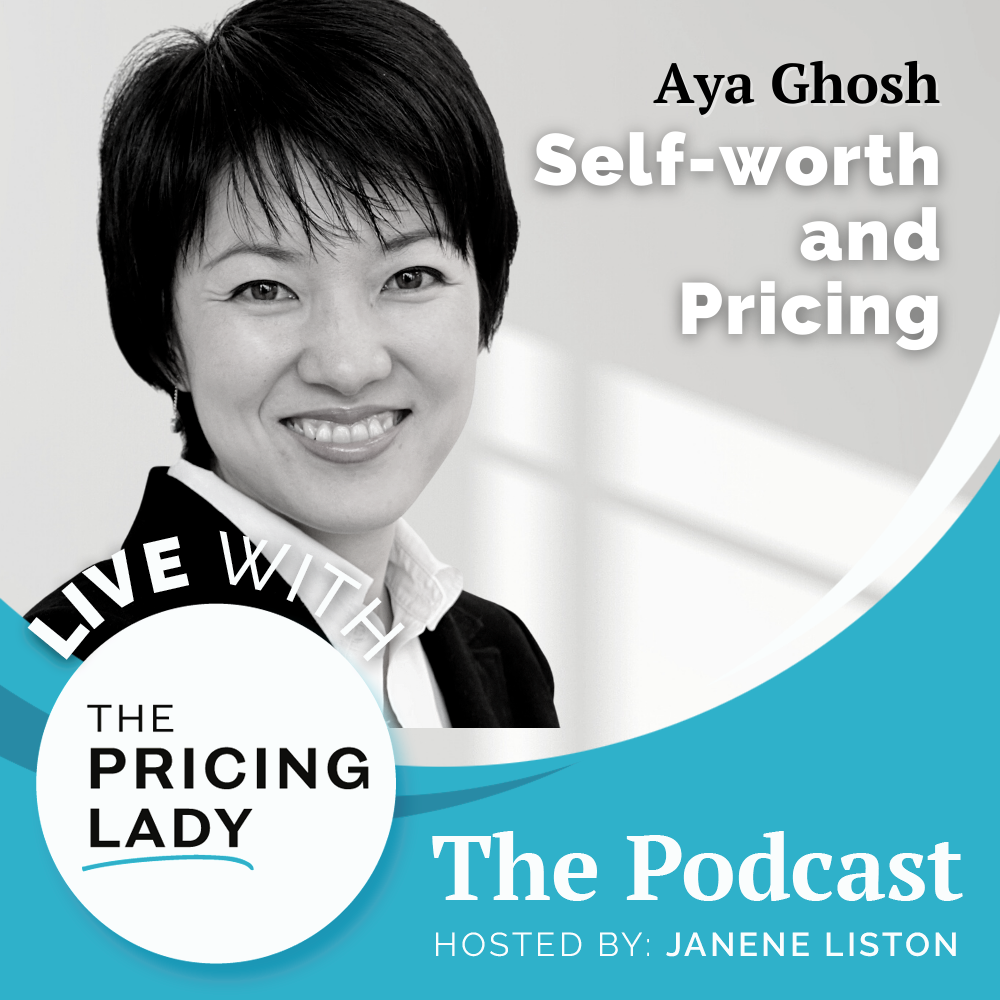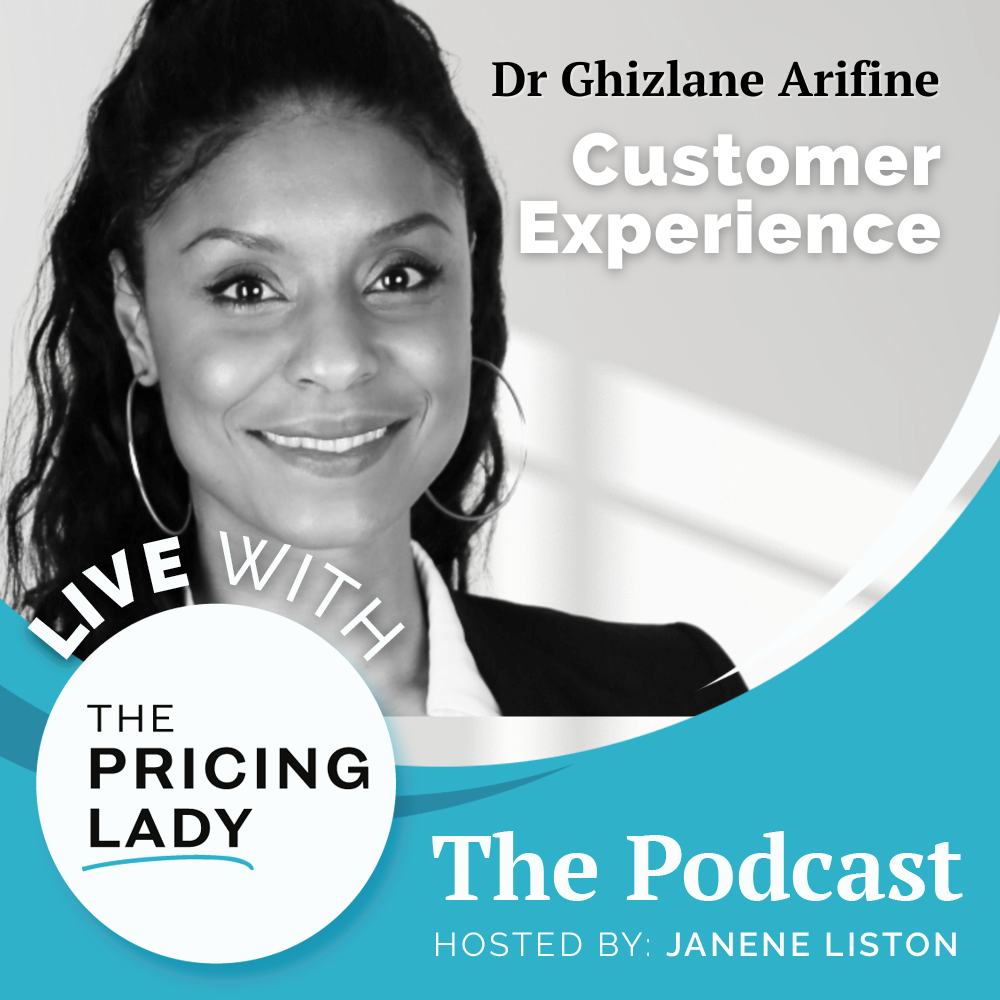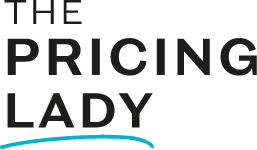Value has an impact on pricing. Purpose and impact play a bigger role in how customers perceive value than ever before.
Traditionally we think of value being derived simply from the functions & features of a product or the outcome of a service. But what customers value often goes way beyond that. We are in a time where people are looking for much more than function and feature. They thirst for products and services that go beyond, that serve a higher purpose, benefit underrepresented communities, that leave a better impact on the world around them.
All this means that depending on your business you have the opportunity to dig deeper and tap in to new resources of value. It also means that you need to be careful about what you do and how you do it because it has a significant impact on how people perceive the value of what you offer and therefore what they’re willing to pay. Once again pricing goes much deeper than then number and that’s what I spoke about with this week’s guest. Let’s look at the impact it all has on pricing.
In this episode
What about the influence of a company’s purpose or their impact on the world? How does that affect value perception? And what’s impact on pricing? That’s what I spoke expert guest Melissa Buch, on Live with the Pricing Lady.
Melissa is the founder of brandbuch: a multi-disciplinary consultancy helping companies and brands find and enhance their purpose as an engine for growth. It’s a team of independent people around the world coming together to create purpose-centric strategies, experiences and designs.When it comes to purpose and impact Melissa is amazing and I’m thrilled to be having this discussion with her about how that can influence how people perceive the value your business brings and in turn your pricing. You’re going to love this interview.
If your prefer to watch in video format, use this link.
Here are the highlights:
- Who’s Melissa
- How she started her business
- Her experience with pricing
- The influence of impact and purpose
- Pricing & Brand are linked
- Pricing decisions affect your brand
- Buying an apple
- The experience impacts the value
My favorite quotes:
“Pricing is an expression of who you are, how do we want people to perceive you? How much value you think you’re bringing? It’s one of the most important touch points for your brand.” Melissa Buch
“…for a lot of small businesses, they don’t make that they don’t yet make that connection. They don’t see the link between whether or not they participate in something like a black Friday and how that is aligned or not with their messaging and their brand.” Janene Liston
” (pricing is) one of the most important touch points for your brand. It’s a communication it’s not only about the profit, but what do you want people to perceive.” Melissa Buch
“Everything you do with your brand and business should be aligned with our purpose and especially your pricing.” Melissa Buch
“Learn how to say no more than, yes…Your time in the day is limited. If you’re busy doing things you don’t want to do, then you don’t have time to fight for the ones you want. You want to do.” Melissa Buch
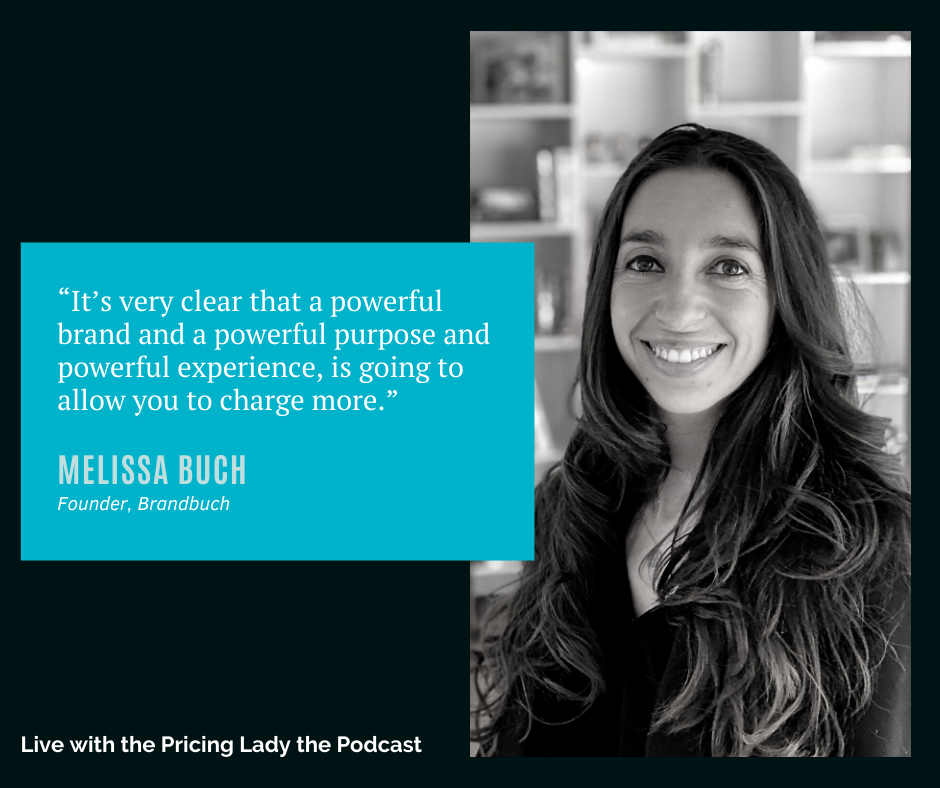
Two great ways to connect with Melissa:
Ready to know more about the influence of impact and purpose on Pricing reach out to Melissa.
Connect with Janene
Website | Linkedin | YouTube | Facebook | Email List
Get started improving your business. Sometimes it’s difficult to know where to begin. I suggest you Download the the self assessment Pricing Scorecard. Get a view of what’s working and what’s not working when it comes to pricing in your business. Figure out where to start making improvements.
Get in touch with Janene. If you’ve got a question that needs answering, a challenge you’re facing or you have suggestions for future topics or guests, let me know. Contact Janene.
Listen up! Don’t miss out. There’s a lot going on and you’ll want to be in the know. Follow my YouTube channel (rate it too please) so you don’t miss an episode of Live with the Pricing Lady or join my Email List.
Transform your business and life. My business is about helping you build a better business. One that’s profitable and where you can confidently charge for the value you deliver. Let’s see how we can work together. Book a complimentary Discovery Call today!
Show Transcript
(Note: this transcript has been edited and reflects the podcast version not the live version)
Melissa: Hi everyone. I’m Melissa, the founder of the brown book, and it was born in France, but grew up in Barcelona and living in Zurich. My, now that I have two kids, six and four years old, I found that brown book, which is a consultancy, helping companies and brands grow through purpose,
Janene: Melissa and I, if I remember correctly, we met.
About three years ago, has it been that long? About three years ago at an event for the magazine, right? Melissa is just, she has this amazing, uh, way of. Looking at brands and what they bring to people in a way that I’ve never seen. She just has a different take and a different eye on it. And I was instantly interested in what she had to say about things.
I wanted to bring her here on the show today to talk with us, not just about her experience with pricing, but of course, how. Purpose and impact can really influence your pricing. Melissa, why don’t you first start by telling us about how you got into starting your own business.
How Melissa Got Started
Melissa: I was working for a leading brand consultancy for a lot of years, I was responsible for the office in Tel Aviv, where I lived for seven years and then helped the company grow. Also in other markets, I was working for leading clients and multinationals, such as Dannon or Nestle. And. Maybe companies. When I moved to Zurich a couple and a half years ago, I realized that I wanted to make a change in the way we help companies and brand growth today. Since consumers we’re changing the behavior of consumers and talent was changing.
Consultancy is actually doing more, most of the same and didn’t really change the way to help them. I graded this methodology called internet. Where we help organizations find that enhance rippers, then express that purpose to the outside world, to consumers, to talent, to partners, and grow from the purpose and what we call a sustainable growth.
Not that growth that will make you grow like very quick, but something that can be sustainably helping the business in the longterm. The how I started. When I got to Zurich, I was looking at the lake, drinking a coffee after working a lot for many years. For the first time I was quiet in the nature and reading, and I decided that it was time to follow my instinct, which actually will here for many years in my work.
I was trying to fight for that new way of helping businesses, but I didn’t really go for it. I felt it was the right time for me when moving here to make that to.
Janene: Excellent. Wow. Interesting story, Melissa, when you first started your business, one of the questions I like to ask people is what was your relationship with pricing or how did pricing feel to you when you first started using.
What Was Pricing Like At First
Melissa: That’s an interesting question. I was working for a company for years. I had a feeling of what pricing could be for brand consultancy, but I was creating something new. A multi-disciplinary team that can tackle strategy, corporate social responsibility, communications, marketing brands all in one place.I didn’t really know how to price it, but I took the approach of test and learn. I started with small clients to feel more and more confident about my service offering. Make sure that when I would go to a big client, I would know how much value I’m bringing to the client.
First, I want them to know the value I’m bringing. Then I started to grow to bigger ones. It was a test and learn approach. You also need to bear in mind that sensibilities, right? Like the UK is different from the us, which is different from suicide. This is actually I think the hardest part to understand how much value you can bring to a company depending on the size, but also the costs.
Because in a certain country, what we are doing, it’s very valuable because it’s more mature in topics around to so many of the entrepreneurs while in others, they don’t see the value. I would say pricing is a learning path that keeps going in every project almost.
Janene: That’s very true. It’s always evolving. As soon as you sort of feel comfortable with it. Mother nature. The universe has a way of tossing something at you that you haven’t thought about before then you’re in that zone of dis-comfort again in trying to sort it out. It’s a very important point that you do have to test your pricing. I think a lot of people are afraid to do that.
The Influence of Purpose and Impact on Pricing
Let’s talk about the effect of influence, influence, and impact. How do you, how do you see that in terms of what it can do for pricing or how even is it connected to pricing?
Melissa: I also remember where I met Janene 2.5 years ago. In that moment, my brain was open to receive a lot of new ideas and innovation because I was shaping my business. I thought, how is it possible that brand consultancies don’t talk about pricing. I was asking myself how all these years we’ve been telling clients how to communicate, how to do a campaign, how to talk about the story, but we never talk about pricing. Do they were in an era where the digital is there? So important pricing is actually the main or one of the main communicators of your brand, still brand and communication consultancies don’t have pricing people in their teams.
So Janene is part of this inspiration that made me think a lot about it. Pricing is an expression of who you are, how do we want people to perceive you? How much value you think you’re bringing? It’s one of the most important touch points for your brand. It is a communication. It’s not only about the profit, but what do you want people to perceive purpose for me represents the center of every decision you make in business.
A great example that we already discussed in the past is about the decision to take part or not on discounts. For example, if to take part or not on the black Friday, which now many brands are deciding not to be any more involved in black Fridays, because it’s against their purpose, they want to create this consistency.
Aligning your Purpose and Pricing
If you take a decision on pricing that is against the purpose you defined is going to take some of your clients. The decisions you make on pricing are definitely affected by the purpose you define as a company. For example, if you want to be transparent to your clients, and if your purpose is about making everything very transparent for your plan and telling them everything that you’re doing and why you’re doing it and making them part of your company, you need to do the same in pricing.
This is what they would expect. It’s why purpose is at the beginning and price. This is a very important expression of purpose.
Janene: Yes, they’re very much linked. What I always tell people is that the number of your price is important, but there is a whole bunch that’s being communicated to people beyond just the number of your actions, how you present that number, all of those things, and they need to be aligned with your brand, with your purpose, with the message that you want to have out there in the world.
I think for, especially for a lot of small businesses, They don’t make that they don’t yet make that connection. They don’t see the link between whether or not they participate in something like a black Friday and how that is aligned or not with their messaging and their brand.
Take a Look At Starbucks
Melissa: Totally. The what’s the price and how to communicate it. But even also what’s the price, because if we think of a company like Starbucks that is charging $3 or three and a half dollars for, for a cup of coffee and we find it amazing and we, most of the time, not even see it, we walk with it and and their purpose is about inspiring and nurturing the human spirit or something like that.
It’s very clear that a powerful brand and a powerful purpose and a powerful experience is going to allow you to charge more. Of course, there is a lot about how you communicate it, but also what’s the price. I mean, having a very strong purpose that connects you emotionally with your consumers. The consumers are valuing this emotional connection they have with you at a very high price, they’re are willing to pay more just because of that.
Right? So it’s also part of the value you’re bringing now and going beyond the product, the value is not. Rash on Atlanta is not just a product, but there is a huge part of it, which is the emotional value. I like the Starbucks example because it’s, it’s a very, it’s one that we all, I think we all had a focus coffee and we were happy walking with it.
And we just spent three times what are our coffee costs? And we’re still super proud of it with our name on the top.
The Emotional Component & Experience
Janene: You’re right in that there is a huge emotional component to this. Maybe when people are buying apples at the grocery store, there’s less of an emotional thing, especially because it’s something that people are doing every day. Of course, there’s still an emotional connection there. It’s just at a different level than when it’s something that you really enjoy. And. The experience is part of the value that is brought. A lot more brands are focusing on the experiences.
Melissa: I would say Whole Foods would disagree with the comment about the apples? Because if you were to buy an apple in Whole Foods, you would pay $4 for an apple and the same apple, eh, probably not the same, but all an apple, like right in the supermarket next to it, it costs $1.
This is an example of how even an apple can be sold at $4, I would say in food, these also happening and in distribution that actually holds this now. Going through a very interesting change in their pricing strategy because of Amazon that acquired them. Amazon is starting to be very aggressive in discounts and trying to change the price strategy of WHole Foods, which was attracting a high-end customers.
If Amazon is actually making a mistake or is it right for them to attract mass consumers? No. But for Whole Foods the price of an apple is a symbol of who they are, what they stand for, all the money they give back to their communities. The apple is a statement for them. Products are, as you said, part of an experience now, and this is what consumers value, whereas the experience around the apple, if you go back to the example, rather than the apple itself.
Another Example of the Impact of Value on Pricing
Janene: Two things came to mind here. One is a co-op here in Switzerland has this prima Gusto line, a friend of mine who used to work for co-op. He explained to me why the prima gusto line is so much more expensive because they actually hired people to go out and do taste tests. This value has an impact on pricing. They pick the varieties and the vendors based on primarily how it tastes as opposed to most of the fruits and vegetables, which are picked for things, or the varieties are chosen for things like a shelf life and how pretty it looks or these types of things.
You see people, they look at the apples and they’re looking to find the one that. The perfect, whatever it is they want, I know me. I’m a, I’m the, when it comes to produce, I’m a sniffer. Yeah. Because if it looks like a strawberry, but it doesn’t smell like a strawberry, then I’m not so interested in purchasing it.
This prima Gusto line is more expensive because in part the value behind it, or the value for me, it smells like a strawberry, a little happier to pay more for it. The other thing I find interesting about what you said is ADA. Amazon and, uh, whole foods, which are two brands to me that have a very different.
Perception of value and a very different strategy from a, from a pricing context. And it would seem like the kind of be like a clash of waves. So I find that an interesting thing. How do you bring those two things together?
The Big Debate & It’s Impact on Pricing
That’s a big debate among consultants.
Look at Amazon / Whole foods pricing and what’s happening. I think at the end, this is a good example of how important pricing is. Like for Amazon pricing of their brands of their marketplace, right? Like this is the most important thing for them when taking a decision in what products to sell and how to sell them, and they need to be cheaper and they need to be accessible to everyone.
For Whole Foods, it’s also a statement, in a different way. Amazon is saying the way to grow, of course the way they know, that’s go down on pricing. For whole foods, the way to grow is to bring better products. Like this is where they are now in an interesting conflict that we will see who is right there both ways. One you grow with more value and the other one, you grow with more volume. Both ways work.
Janene: Both ways can be effective from a pricing perspective, with an effective pricing strategy. One of the things that, that’s very important is who are you targeting with this?
If they (Amazon) want to shift Whole Foods, then there are obviously going to also have to shift who they’re targeting towards. If they’re going to go with a more economy or a low price or a lower price strategy, then the audience that they’re targeting is actually a different audience.
Melissa: That’s exactly like that. I think to stay on a high price strategy and premium strategy during these times of COVID is a bold statement. It’s not easy for many brands and companies, the ones that will stick with their positioning and will survive. They will come out stronger from the crisis.
Janene:I agree.
Dropping Prices in Crisis
At the very beginning we saw a lot of businesses were dropping their prices in order to try and bring more people in. But in such a situation like this, it’s very difficult to bring more people in being able to. Even break even much less, be more profitable on such a strategy is, is even more difficult in a time like this.
Most companies who have been able to hold their prices or raise them or find ways to raise them, have probably come out in a better position. Melissa, we’re going to start wrapping this up here. I have a couple of questions that I ask at the end. If there’s one thing that you’d like people to remember from this episode, one point when message, what would that be?
Melissa: Everything you do with your brand and business should be aligned with our purpose and specialty pricing.
Janene: I agree wholeheartedly. Excellent.
Words of Wisdom for Those Getting Started
Melissa: Learn how to say no more than, yes. That will be the number one. Like I think when you started your business, you just say yes to everything because you are not confident or you are afraid you won’t be able to. Sell to the clients you want at the price that you want and the things you want, you get easily distracted by things you don’t want and convince yourself.
It’s okay. I can one goal. So this, right, right. So that would be the mistake I would try to avoid from the beginning and just go for what you want and say no to the things that are not aligned to it.
Janene: I think that there’s an important point there. I know I experienced it at the beginning. Oops. I know other people have, is sometimes that saying no, you know, people who don’t have their own businesses, they’re like, oh, you just have to take anything and everything that comes your way, you get this pressure from people who have never owned their own businesses.
Who actually never really thought about what’s important. There, you can get this pressure from outside, you know, to, to go after everything and take anything, but you’re right. You have to be selective at times. Melissa: Yeah, your time in the is limited. If you’re busy doing things, you don’t want to do that and you don’t have time to fight for the ones you want.

